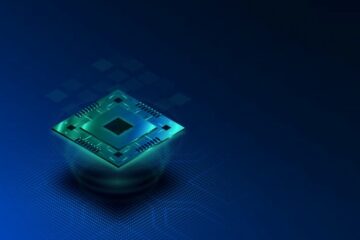We are currently seeing industrial equipment manufacturers investing significant sums to develop new connected service propositions and for good reason. Demand for these smart products is driving growth in the Industrial Internet of Things (IIoT) sector, with the market expected to top $1 trillion (0.91 trillion) by 2028, says Mariusz Stolarski, global head of technology, Mobica.
The appeal for manufacturers is clear. Instead of just selling a customer a product, and maybe a few aftermarket parts when it’s time for maintenance or repair, these businesses can now sell ongoing services which generate recurring revenue on a monthly basis.
They can use their equipment to capture information, analyse it and present it back to customers on their chosen digital device.
While manufacturers will obviously need to develop digital services to support the processing of analytics and end user dashboards, the bigger technical challenge will be in building the infrastructure to support initial data capture.
Manufacturers need to be aware of this as it will fundamentally impact future product design. It will force them to consider how they manage data transference and ensure the reliability of devices while in the field. This will lead to companies developing services that can do more computing at the edge.
Data transference
When it comes to accessing data, where products will be situated in a busy factory, out at sea, in a shaft underground will have a major impact. These industrial environments often come with several connectivity constraints that need to be factored in. For example, it may not be possible to physically connect thousands of sensors covering a warehouse or offload data on to a customer’s Wi-Fi network as companies are unlikely to want third party technology interfering with their own network.
This will require manufacturers to find alternative options, such as cellular networks and satellite communications, which will add extra costs to service provision. To minimise those costs, companies may look to reduce the volume or frequency of that data being transferred to the cloud for processing.
However, if we are talking about safety critical equipment, customers may not want any delays if an alert needs to be raised. Rather than wait to send information to the Cloud, this will inevitably lead to companies designing infrastructure that will allow more processing to take place at the edge.
Reliability
Another pertinent consideration for manufacturers will be the need to meet stringent SLAs. Companies are not going to allow third party tech providers to deploy equipment on site, with access to their sensitive data, unless they are very confident the information being captured is safe.
They will not want these solutions to go down especially where safety critical systems are involved. And, if there is a disaster, such as a power cut, cellular network failure or an internet outage, they will seek assurances that no data will be lost.
This will require equipment manufacturers to build redundancy into the supporting infrastructure including additional storage capacity and computing capabilities, which will need to be situated at the edge.
Computing power
Given all these demands for extra processing at the edge, manufacturers are going to need to think hard about the computational capacity of their products. And where, traditionally, manufacturers have looked to minimise the amount of silicon going into devices in order to cut down on costs, attitudes will need to change. This is particularly the case when you also consider that IIoT devices may be asked to remain in situ for up to five to ten years.
If manufacturers use a product that can cope with customer expectations and still be fit for purpose in a decade, they will need to add more silicon than is currently required. Building in these additional resources, including computing power and storage, will give businesses the flexibility to change or even add functionality, via wireless update, over that time period.
As they do this, they will want to consider integrating solutions such as System-on-Chip (SoC) which allows all of a system’s necessary components to sit on one microchip. This will also enable organisations to introduce machine learning at the edge. And, for applications such as predictive maintenance, they would be able to utilise machine learning acceleration blocks.
Striking a balance
Striking the right balance between edge vs Cloud, and costs vs computational power, will be crucial to a product’s performance and their service’s ultimate profitability. Just how much manufacturers default to the edge will, of course, depend on their own set of circumstances.
Manufacturers moving into the IIoT market will need to be conscious that these critical choices must be made during the development of their product prior to deployment. These vital business decisions are likely to have repercussions which could affect businesses for decade or longer.
The author is Mariusz Stolarski, global head of technology, Mobica.
Comment on this article below or via Twitter: @IoTNow_OR @jcIoTnow
- SEO Powered Content & PR Distribution. Get Amplified Today.
- Platoblockchain. Web3 Metaverse Intelligence. Knowledge Amplified. Access Here.
- Source: https://www.iot-now.com/2023/04/19/129787-why-iiot-at-the-edge-will-require-manufacturers-to-reconsider-their-views-on-silicon/
- :is
- $UP
- a
- Able
- About
- acceleration
- access
- accessing
- Additional
- affect
- Alert
- All
- allows
- alternative
- amount
- analyse
- analytics
- and
- any
- appeal
- applications
- ARE
- article
- AS
- At
- author
- back
- Balance
- basis
- BE
- being
- below
- between
- bigger
- Blocks
- build
- Building
- business
- businesses
- by
- CAN
- capabilities
- Capacity
- capture
- case
- challenge
- change
- choices
- chosen
- circumstances
- clear
- Cloud
- come
- Communications
- Companies
- components
- computational power
- computing
- computing power
- confident
- Connect
- connected
- Connectivity
- conscious
- Consider
- consideration
- constraints
- Costs
- could
- course
- covering
- critical
- crucial
- Currently
- customer
- customer expectations
- Customers
- Cut
- data
- decade
- decisions
- Default
- delays
- Demand
- demands
- deploy
- deployment
- Design
- designing
- develop
- developing
- Development
- device
- Devices
- digital
- digital services
- disaster
- down
- driving
- during
- Edge
- enable
- ensure
- environments
- equipment
- especially
- Even
- example
- expectations
- expected
- extra
- factory
- Failure
- few
- field
- Find
- fit
- Flexibility
- For
- Force
- Frequency
- functionality
- fundamentally
- future
- generate
- Give
- Global
- Go
- going
- good
- Growth
- Hard
- Have
- head
- How
- HTTPS
- Impact
- in
- Including
- industrial
- industrial equipment
- inevitably
- information
- Infrastructure
- initial
- instead
- Integrating
- interfering
- Internet
- internet of things
- introduce
- investing
- involved
- IT
- lead
- learning
- likely
- longer
- Look
- looked
- machine
- machine learning
- made
- maintenance
- major
- manage
- Manufacturers
- Market
- May..
- Meet
- minimise
- monthly
- more
- moving
- necessary
- Need
- needs
- network
- networks
- New
- of
- on
- ONE
- ongoing
- Options
- order
- Organisations
- outage
- over
- own
- particularly
- parts
- party
- performance
- period
- Physically
- Place
- plato
- Plato Data Intelligence
- PlatoData
- possible
- power
- present
- Prior
- processing
- Product
- product design
- Products
- profitability
- providers
- provision
- purpose
- raised
- rather
- reason
- reconsider
- recurring
- reduce
- reliability
- remain
- repair
- repercussions
- require
- required
- Resources
- revenue
- safe
- Safety
- satellite
- says
- SEA
- sector
- seeing
- Seek
- sell
- Selling
- sensitive
- sensors
- service
- Services
- set
- several
- significant
- Silicon
- site
- smart
- Solutions
- Still
- storage
- such
- sums
- support
- Supporting
- Systems
- Take
- talking
- tech
- Technical
- Technology
- ten
- that
- The
- the information
- their
- Them
- These
- things
- Think
- Third
- thousands
- time
- to
- top
- traditionally
- transferred
- Trillion
- ultimate
- Update
- use
- User
- via
- views
- vital
- volume
- vs
- wait
- Warehouse
- which
- while
- Wi-fi
- will
- wireless
- with
- would
- years
- zephyrnet












